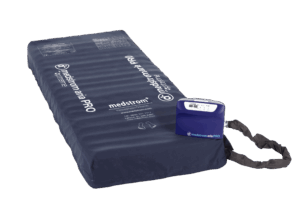
What is the Definition of a Pressure Ulcer?
Pressure ulcers can often be referred to as bed sores, pressure injuries, or pressure sores. In recent years there has been a drive to standardise aspects of pressure ulcer management, such as definition and categorisation. The pressure ulcer definition was revised in April 2019 by NHS Improvement who suggested a pressure ulcer should be defined as:
“A pressure ulcer is localised damage to the skin and/or underlaying tissue, usually over bony prominences (or related to medical or other device), resulting from sustained pressure (including pressure associated with shear). The damage can be present as intact skin or an open ulcer and may be painful”.1
The standardisation of the definition was accompanied by the standardisation of categorisation (also known as grading) of pressure ulcers. NHS Improvement (2018)1 updated their guidance in March 2019, recommending that pressure ulcers should now follow the EPUAP (European Pressure Ulcer Advisor Panel), NPUAP (National Pressure Ulcer Advisor Panel) and PPPIA (Pan Pacific Pressure injury Alliance) categorisation of pressure ulcers using 1-4, DTI (deep tissue injury) and unstageable1. They also advised to standardise to the terminology of ‘category’, instead of ‘grade’.
It’s important to remember, the skin is one of the largest organs in the body, measuring around 1.5-2m2 in adults, and weighs around 15% of the total body weight.2 It is a vital organ and provides use with important functions such as, protection against wear and tear, infection, and UV rays. It also provides:
- Homeostasis/temperature regulation
- Communication
- Stimuli
- Absorption and also excretion
- Nutritional and water storage functions2
Therefore, when this system is damaged or comprised through pressure ulcer development, surgery, or illness it may have an impact on the function.
Download Our Pressure Ulcer Guide
Learn More About Pressure Ulcers Here












